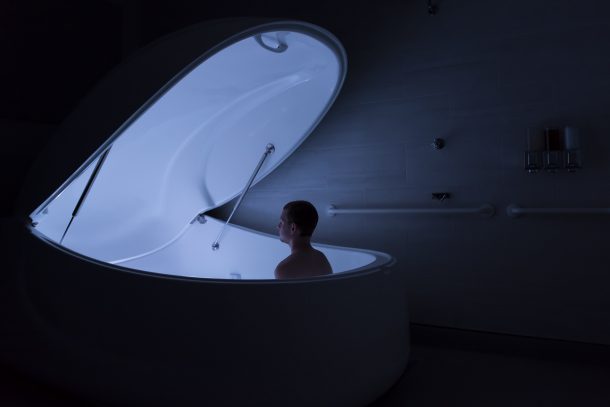Can I drown in a float therapy tank? (And what floating is like)
If you're anything like us, you always look for new ways to relax and de-stress. When it feels like so much is happening around us, finding the time and motivation to take a break can be challenging. And float therapy is one of the best ways to put your mind at ease.
Float therapy pools and pods are sometimes referred to as sensory deprivation. They involve lying in a shallow pool of warm salt water, allowing most external stimuli to disappear.
Floating leads to an incredibly peaceful state that helps alleviate stress and anxiety while providing a sense of mental clarity. Think of it as an hour of zen.
It's completely normal to be weary about new things, especially when water is involved. So is it possible to drown in a float therapy tank? And what are float therapy sessions like?
Can you drown in a float therapy tank?
The truth is any water can be dangerous for humans; however, it’s nearly impossible to drown in a float tank. Your body is cushioned and supported (a.k.a. floating) in the water by the 900+ pounds of Epsom salt. Like a memory foam mattress, your body makes a slight imprint in the water without actually coming in contact with the bottom.
And if you're worried about falling asleep and potentially turning over, don't be!
Turning over in the float therapy tank is extremely difficult, even when trying. Because of the buoyancy, your body is cradled and prevented from turning side to side.
Believe it or not, sleeping in float tanks brings a sense of relief and relaxation. Here at Float Milwaukee, we regularly offer a service called overnight floating where clients arrive in the evening, and sleep the night away in the float tank.
While it sounds like you’ll end up like a prune with that much time in the water, your body is resistant to wrinkling because of the high salt content of the solution.
How is floating possible?
When you drop an ice cube into the water, it floats because the ice is less dense than water. In fact, a 440 million pound glacier will float in water, while a ten pound rock would sink. Epsom salt adds to the density of the water, making the liquid more dense than your body no matter how much you weigh. The salt dissolves entirely while adding enough mass to keep you afloat. So if you have a fear of water or cannot swim, floating can help put your mind at ease.
Aside from worrying about drowning, people may be concerned about feeling claustrophobic in the float tank due to its confined space and closing lid. It's important to note that float therapy pods and pools provide ample room, enough for a person to stretch fully. The wide, carefully designed tanks ensure your comfort, as well as provide plenty of space for you to stretch, relax, and explore peace. The open pools do not have a lid that closes to help regulate temperature. Even with a closing lid, they are controlled by a hydraulic mechanism with the handle inside the pod that you can effortlessly push open with one hand. Both the pods and pools are completely secure as you enter into a private, locking room, so no one can enter your space.
What is floating like?
Floating is a one-of-a-kind experience that benefits everyone differently. While it’s often referred to as sensory deprivation, that term is technically misleading. Floating removes most stimulation and recalibrates your system. That’s why we like to describe it as sensory enhancement.
Floating reduces stress and anxiety, lowers blood pressure and heart rate, relieves aches and pains, improves sleep quality, increases creativity, and heightens awareness. Read more about the benefits of float therapy here.
Here's how it works:
You get the option to choose a pod or pool, depending on the type of environment you'd like. For example, a pod allows you to shut yourself off from the world through a lid. Closing the lid helps maintain consistent temperature between air, water, and skin. This helps ensure a quicker and longer period of feeling like you are floating in space without the feel of water touching your skin.
On the other hand, the pool offers additional space and lower humidity. If you're looking to stretch out and maximize your space like some of the athletes that come in, the pool is an excellent choice. Rather than a spherical pod, you're in a circular pool without an enclosure.
And the best part? You have full control over lights and music in both. It's a personalized experience that allows you to relax and float in your own serene environment. Both environments allow for total quiet and dark due to how the overall rooms are constructed.
From the moment you enter the water, it's like a warm hug from the inside out. And as you adjust to the temperature, your muscles and breathing rate begin to relax — it's truly a feeling like no other. Since everyone experiences float therapy differently, we recommend you go ahead and try your first floating experience!
Settle into serenity
Whether you're looking for that moment of "eureka" or need an hour to escape our fast-paced world, floating is a great way to get away from everything and experience true relaxation. The tanks are designed for comfort and provide plenty of space to stretch out. And while we understand how water might be a concern, let us assure you it’s an incredibly safe and secure experience. With so many benefits, there's no reason not to try float therapy! So go ahead, take the plunge, and experience floating for yourself.


